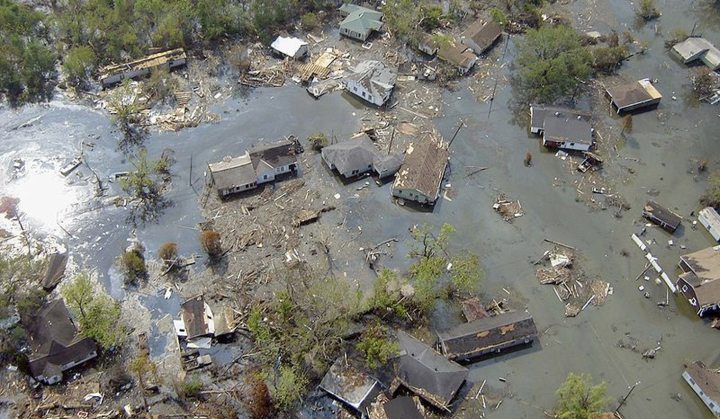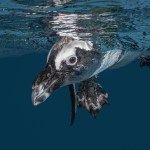Newsdeck
Citizens clean up: researchers protect birds after BP oil spill

Port Sulfur is one of many small towns lining the southern coast of Louisiana. Only two hours away from New Orleans, the town is mostly centered around one highway, which paves its way down the tip of Louisiana from New Orleans to Venice. Boasting a population of about 1,700 individuals, the majority of families in Port Sulfur still live in FEMA houses - the small, cinder-block supported, ready-to-go, remnants of Louisiana’s ongoing recovery efforts in the aftermath of Hurricane Katrina. The storm may have hit the region eight years ago, but not much has changed ever since. And the Deep Water Horizon disaster made everyone's life even more difficult. By MICHAEL IVKOV.
Mid March 2013, I arrived at the headquarters of the Loon recovery effort team. “Headquarters” turned out to be a pink house near the banks of the Mississippi River and its levy. The research team I was a part of was lead by a young student, Hannah, who outlined the plan of research and what we were looking for. Hannah explained that the Common Loon is an apex predator throughout North America; it preys on both freshwater and saltwater fish, as well as crustaceans. Ever since the Deepwater Horizon spill, teams of scientists like Hannah have been monitoring not only the petroleum levels in the Gulf’s water, but also traces of the oil toxins in animals – in our case, the Loon.
The toxins are offspring from petroleum spilled into the Gulf from the Deepwater Horizon crisis, which released devastating quantities of oil into the Gulf of Mexico beginning on 20 April 2010. Upon the combustion of the MC252 Deep Water Horizon oilrig’s cap, gallons of petroleum surrounded the rig. Water currents and winds directed the gushing oil across the Gulf, covering a net area of over 600 miles; the Gulf’s northern coasts were undoubtedly the most affected area. Moreover, by the time BP finally sealed the cap and allegedly stopped all leakage, more than 4.9 million barrels (that’s about 200 million gallons) of crude oil had already been released into the Gulf.
Photo: Fire boat response crews battle the blazing remnants of the offshore oil rig Deepwater Horizon, off Louisiana, in this April 21, 2010 file handout image. REUTERS/U.S. Coast Guard/Files/Handout
It goes without saying that the Deepwater Horizon spill devastated the Gulf’s ecosystem, causing a countless of mortalities to animals, and adverse sub-lethal effects on citizens. Currently, citizens and scientists are studying the Gulf’s current conditions and cleaning up after Deepwater Horizon.
During my travels in southern Louisiana in March of 2013, I met some of the most tenacious and fascinating individuals, while capturing and studying a bird common to the region, the Common Loon.
So where’s the link between studying birds and cleaning up an oil spill? Well, by its very nature, the Common Loon is a phenomenal bio-indicator. This means that Loons can display the collective elements of what they eat. These “elements” can include toxins such as PAHs (Polycyclic Aromatic Hydrocarbons), which are found in oil, or even dispersants used by Exxon, like COREXIT 9500, which is a highly carcinogenic and mutagenic toxin to living things. The expedition involved capturing Loons at night and taking somatic samples, primarily blood. Toxins like PAHs would then show up in the blood samples after Hannah and I were accompanied by four other volunteers, whose ages varied greatly. Although we each had different reasons for joining, we shared a unifying drive to help these magnificent birds recover.
Within the first week, our team met the captain of the small fishing vessel we would use to capture birds. Todd was a Louisiana local, and ran a sport fishing business in the area. Tall, lean, and sporting a withered charter-fishing cap, Todd often stood behind his navigation devices, watching us work. He told stories about the effects of the oil spill on his business, and on the fish he caught. Todd’s devotion certainly did not revolve around the paycheck offered to him by Earthwatch, a non-profit organisation; Todd wanted to the recover the health of his home after the oil spill.
One cold and windy night on the boat, the team captured its first Loon. The large juvenile bird, which has a wingspan of over 100 cm, was in a panic, fighting for survival. After the team secured the bird, each volunteer passed the juvenile around the deck. Whether it was the retired lady who joined our trip, or the young budding biologist of 22, every individual was brought to silence when given the revered wild bird; our motivation for joining the trip was even clearer.
But the most important part of our research had yet to come. The team passed the Loon to Hannah to test the bird for samples of oil or toxins. Holding it down, by grasping its jaw, and covering its head with a towel, Hannah proceeded to draw blood from the Loon’s neck and take fecal samples, and feather samples. Standing at the back of the boat, a volunteer turned and said to me, “It’s actually unbelievable how much we can find out from the health of one juvie [juvenile] Loon.” After collecting all the samples from the bird, we released the confused animal into the pitch-black waters of the Gulf.
In the next week, the head of the entire expedition and director of the Center for Loon Conservation, who was heading the entire expedition, arrived at our residence. Dr. Jim Paruk is an incredible individual. Driven, motivated, amusing, and humble, Dr. Paruk brought a second wind of effort and motivation to the team as a whole. He came in time for dinner, and enjoyed some of Louisiana’s fresh seafood with the team. As most volunteers departed after dinner, Dr. Paruk washed the dishes on his own.
Dr. Paruk told the team stories about how his love of nature persisted from his Catholic schooldays. This fascination sparked his interest in birds, and when Deepwater Horizon spilled in 2010, his conscience brought him to study the consequences of the spill. In his summary annual year report, Dr. Paruk concluded his findings by stating:
We have shown that (1) the frequency and levels of PAHs in the circulatory system of loons has increased in the years following the Deepwater Horizon oil spill; (2) coastal Louisiana loons are long-distant migrants; (3) the great majority of the immature loons are underweight and emaciated, and on average, are found closer to shore than adults; and (4) crabs appear to be an integral part of their diet. Currently, it is unknown if the levels of oil metabolites present in the loon circulatory system are having any lethal or sub-lethal effects. Although bioaccumulation of PAHs in ecosystems varies by species and is generally difficult to quantify, our preliminary findings suggest that further monitoring of the wintering loons in Barataria Bay, Louisiana is warranted.
Dr. Paruk regarded every bird as an indicator of the Gulf’s status. Each bird was a citizen, and in a way, the Loon was a microcosm of its environment. What we extracted from the seven or so Loons we caught would show the quantity of PAHs in crustaceans and fish, and their prey of crustaceans and fish altogether. Loons are what they eat, at least with regard to the toxins BP [and other companies] introduced into the waters of the Gulf.
Although the levels of mutations related to the spilled petroleum in net species in the Gulf has decreased since 2010, a long journey remains. As the Earthwatch Year 1 Annual Report shows, an ongoing trend for immature Loons to have slightly higher levels of PAHs than adult loons persists to this day. The Common Loon’s niche leaves it especially vulnerable to consuming toxins, however, animals on lower tiers of the food pyramid have been drastically affected. Furthermore, the fishing industry has witnessed extreme difficulties due to the spill, both commercial fishing and sport-fishing businesses like Todd’s, who has had to cope with customer skepticism ever since the spill.
Like the team I worked with, global citizens must react to man-made catastrophe’s against nature, driven by the desire to understand the consequences of sloppy drilling and other reckless actions.
One of the volunteers on my trip to Louisiana noted the stark fact that citizens should not still have to clean up two years after a mistake made by a major corporation. Enterprises like this will have to learn on a global scale that crude toxins, like petroleum, or even methane gas (released in terrestrial fracking), will persist for ecological generations. In my case, witnessing the presence of oil toxins in an environment two years after Deepwater Horizon made this reality vivid. DM
Main photo: Port Sulphur Louisiana after Hurricane Katrina, extensive residential damage and flooding. (Wikipedia)


















 Become an Insider
Become an Insider